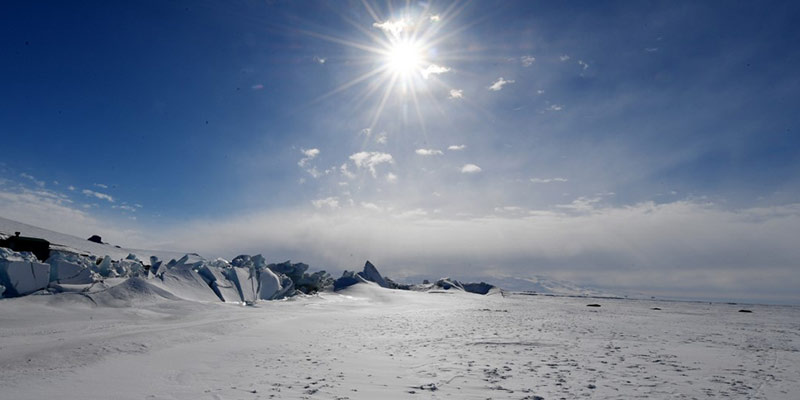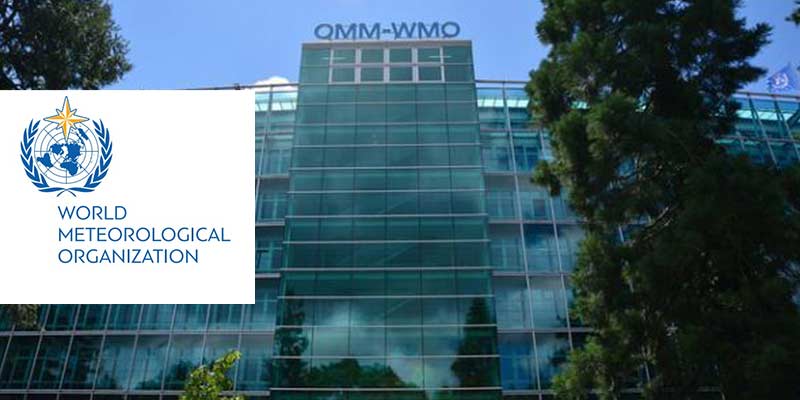- World
- Mar 25
WMO issues ‘red alert’ on climate change
• The World Meteorological Organisation (WMO) is sounding a red alert about global warming.
• The WMO’s ‘State of the Global Climate 2023’ report shows that records were once again broken, and in some cases smashed, for greenhouse gas levels, surface temperatures, ocean heat and acidification, sea level rise, Antarctic sea ice cover and glacier retreat.
Key points of the report:
• The report confirmed that 2023 was the warmest year on record, with the global average near-surface temperature at 1.45°Celsius (with a margin of uncertainty of ± 0.12°C) above the pre-industrial baseline. It was the warmest ten-year period on record.
• Heat waves, floods, droughts, wildfires and rapidly intensifying tropical cyclones caused misery and mayhem, upending everyday life for millions and inflicting many billions of dollars in economic losses.
• In 2023, ocean heat content reached its highest level in the 65-year observational record.
• On an average day in 2023, nearly one-third of the global ocean was gripped by a marine heat wave, harming vital ecosystems and food systems. Towards the end of 2023, over 90 per cent of the ocean had experienced heat wave conditions at some point during the year.
• In 2023, global mean sea level reached a record high in the satellite record (1993 to present), reflecting continued ocean warming as well as the melting of glaciers and ice sheets.
• The rate of global mean sea level rise in the past ten years (2014–2023) is more than twice the rate of sea level rise in the first decade of the satellite record (1993–2002).
• The global set of reference glaciers suffered the largest loss of ice on record (since 1950), driven by extreme melt in both western North America and Europe, according to preliminary data.
• Antarctic sea ice extent was by far the lowest on record, with the maximum extent at the end of winter at 1 million sq km below the previous record year, equivalent to the size of France and Germany combined.
• Glaciers in western North America and the European Alps experienced an extreme melt season. In Switzerland, glaciers lost around 10 per cent of their remaining volume in the past two years.
• Weather and climate extremes are either the root cause or serious aggravating factors that in 2023 triggered displacement, food insecurity, biodiversity loss, health issues and more.
• Concentrations of the three main greenhouse gases – carbon dioxide, methane, and nitrous oxide – reached record high observed levels in 2022, the latest year for which consolidated global values are available (1984–2022). Real-time data from specific locations show that levels of the three greenhouse gases continued to increase in 2023.
• The WMO said there is a high probability that 2024 will be another record-hot year.
• The cost of inaction is staggering. Between 2025 and 2100, it may reach $1,266 trillion, representing the difference in losses between a business-as-usual scenario and a 1.5°C pathway. Noting that this figure is likely a significant underestimate, the UN weather experts call for immediate climate action.
• The report also acknowledged a glimmer of hope in trying to keep the Earth from running too high a fever.
• Renewable energy generation, primarily driven by the dynamic forces of solar radiation, wind and the water cycle, has surged to the forefront of climate action for its potential to achieve decarbonization targets.
• In 2023, renewable capacity additions increased by almost 50 per cent from 2022, for a total of 510 gigawatts (GW) – the highest rate observed in the past two decades.
World Meteorological Organisation (WMO)
• The World Meteorological Organisation (WMO) is a specialised agency of the United Nations.
• It is the UN system’s authoritative voice on the state and behaviour of the Earth’s atmosphere, its interaction with the oceans, the climate it produces and the resulting distribution of water resources.
• The WMO has 193 Members, including 187 Member States and 6 territories, maintaining their own meteorological services.
• It originated from the International Meteorological Organisation (IMO), which was founded in 1873.
• Established in 1950, WMO became the specialised agency of the UN in 1951 for meteorology (weather and climate), operational hydrology and related geophysical sciences.
• WMO facilitates the free and unrestricted exchange of data and information, products and services in real or near-real time on matters relating to safety and security of society, economic welfare and the protection of the environment. It contributes to policy formulation in these areas at national and international levels.
• WMO coordinates the activities of National Meteorological and Hydrological Services in 193 States and territories so that basic weather, climate and water services are made available to anyone who needs them.
• The Secretariat, headquartered in Geneva, is headed by the Secretary-General.
Manorama Yearbook app is now available on Google Play Store and iOS App Store



